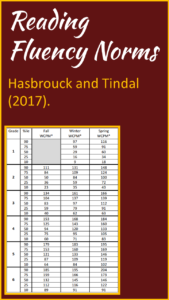Reading Grade Levels
When discussing reading grade levels, we can get deeply into the weeds. However the purpose of this article is to help teachers deal with the parent question: “What is my child’s reading grade level?”
A recent teacher’s post in a science of reading Facebook group (name not included here) justifies the parent’s question:
…it seems completely reasonable for parents to wish to know, in practical terms, how far away their child is from [the] grade-level target.
If we have universal assessments, NAEP, state assessments, etc. that identify where students fall with regard to grade level reading, it seems appropriate to have a quality measure (in addition to the diagnostic testing) that gives a broad overview of where a student falls on that continuum? It is just one part of the assessment information within the “data folder” we keep on a student. It isn’t the driving force of instruction, but rather a way to indicate where s/he stands in relation to the overall goal.
We have to understand what parents do not and do mean by the “reading level” question.
Few parents want to know or would understand what a normed reading assessment demonstrates. Parents don’t generally care about how well their children score relative to students in Mississippi or Connecticut.
I agree with the teacher’s post that the parent question is legitimate. However, I disagree with the teacher about needing a quality measure “that gives a broad overview” of a student’s reading grade level” to answer the parent’s question.
Dr. Matt Burns responded to the teacher’s post regarding the validity of grade level reading assessment data:
The problem is that assessments that result in a level are so flawed as to make the data meaningless. 1. The scores have a large standard error of measure that usually equals + and – 2 levels. So a 2.8 is somewhere between 0.8 and 4.8. Two scores within that range are essentially equal. 2. Data never generalize to or from an individual. Thus, if a score equaled 2.8 and if 2.8 actually meant something, that still doesn’t mean that an individual kids at 2.8 could actually read any individual book supposedly written at 2.8. We are better off to abandon levels and describe kids in relation to skills and norms.
So if we shouldn’t pull out the state assessment scores indicating reading grade levels, how should we answer the parent question: “What is my child’s reading grade level?”
Remember that what the parent really wants to know includes these two sub-questions: 1. Can my child read and understand the “grade level” stories and textbooks used in class? 2. How well does my child read compared to others in the class?
In addition to a beginning of the year a diagnostic fluency assessment (I’ll share one at the end of the article), teach parents at Back-to-School Night how to create simple fluencies from “grade level” stories and textbooks with an oral or written re-tell or summary. Parents can be trained how to select an appropriate passage from grade level text to be used in class, listen to their child read and tabulate total word count-errors and the correct percentage of words read in a one-minute timing. No need to train parents to analyze prosody, attention to punctuation, types of miscues, etc.
Parents of younger children can ask, “Tell me about what you read.” Parents of older children can say, “Write a paragraph about what you read.” Creating, administering, and scoring a fluency with re-tell or summary is not rocket science, and the results perfectly answer the Can my child read and understand the “grade level” stories and textbooks used in class? question.
These two tasks help parents answer their own question and can help them complete their own progress monitoring.
As an aside, I also advise training parents how to use simple comprehension cues to discuss reading at home. Teachers might wish to check out my article, Reading Comprehension Cues.

and the baseline fluency numbers of the other students in class (without names, of course, to protect privacy).
Some teachers have strong reservations about sharing assessment data of other children, even if the identities of the children are unknown. However, the public has access to grade level and school scores of state testing that is far more detailed then fluency numerical scores.
If unsure about sharing this data, don’t do so or ask your principal.
*****THE FREE DIAGNOSTIC READING FLUENCY ASSESSMENT*****
The “Pets” diagnostic expository fluency passage is leveled in a unique pyramid design: the first paragraph is at the first grade (Fleish-Kincaid) reading level; the second paragraph is at the second grade level; the third paragraph is at the third grade level; the fourth paragraph is at the fourth grade level; the fifth paragraph is at the fifth grade level; the sixth paragraph is at the sixth grade level; and the seventh paragraph is at the seventh grade level. Thus, the reader begins practice at an easier level to build confidence and then moves to more difficult academic language. As the student reads the fluency passage, the teacher will be able to note the reading levels at which the student has a high degree of accuracy and automaticity. Automaticity refers to the ability of the reader to read effortlessly without stumbling or sounding-out words. The 383 word passage permits the teacher to assess two-minute reading fluencies (a much better measurement than a one-minute timing).